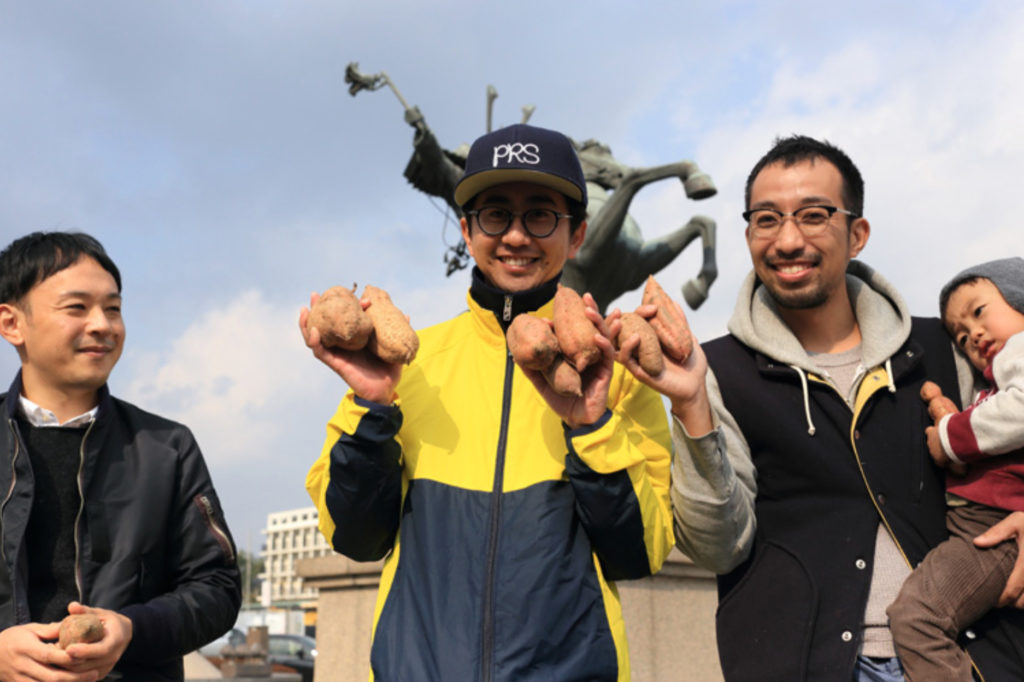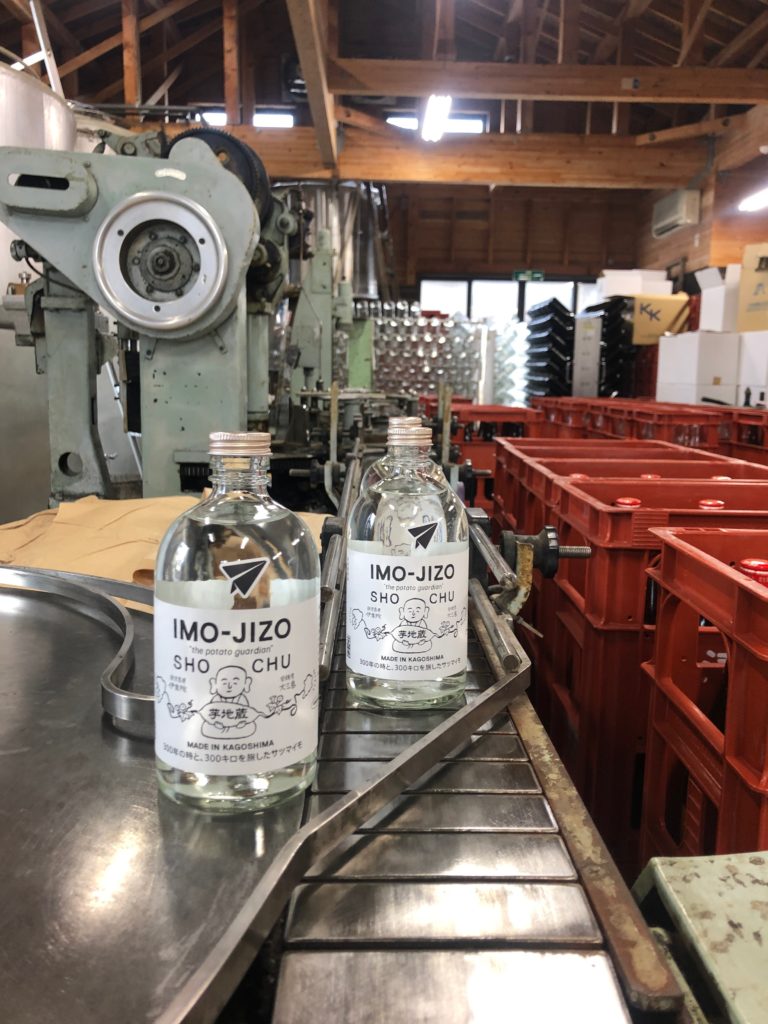The island of Omishima sits atop the inland sea in Ehime Prefecture. Inside Kounji temple on the eastern side of the island is a historic landmark, called “Imo Jizo”. Venerated here is Asami Kichijuro, the priest who brought back sweet potatoes from Kagoshima in the Edo Period and saved his fellow islanders from hunger.
In the second half of the 1700s, Asami Kichijuro, who was born in Omishima, set off on a journey around Japan as a Buddhist pilgrim after suffering the heartbreak of losing each of his four children one after another. On the way, he encountered the sweet potato in the village of Ijyuin in Hioki County of Kagoshima province (currently Ijyuin town in Hioki City, Kagoshima Prefecture). Realizing that this crop was ideal for barren land, he managed to wangle some from the local peasant farmers, which he then brought back to Omishima, where crops had failed. . . and so the legend of Imo Jizo began. The Satsuma Han at the time insisted on stringent searches at checkpoints of all travelers, to protect the secret of their brown sugar and sweet potato production which was the mainstay of the feudal domain’s finances. However, Zen ascetic monks were afforded favorable treatment, and were able to enter and leave with relative ease. It stands to reason that pilgrim Kichijuro was able to sneak the seed potato outside the domain, all the way to the starving islanders back home.
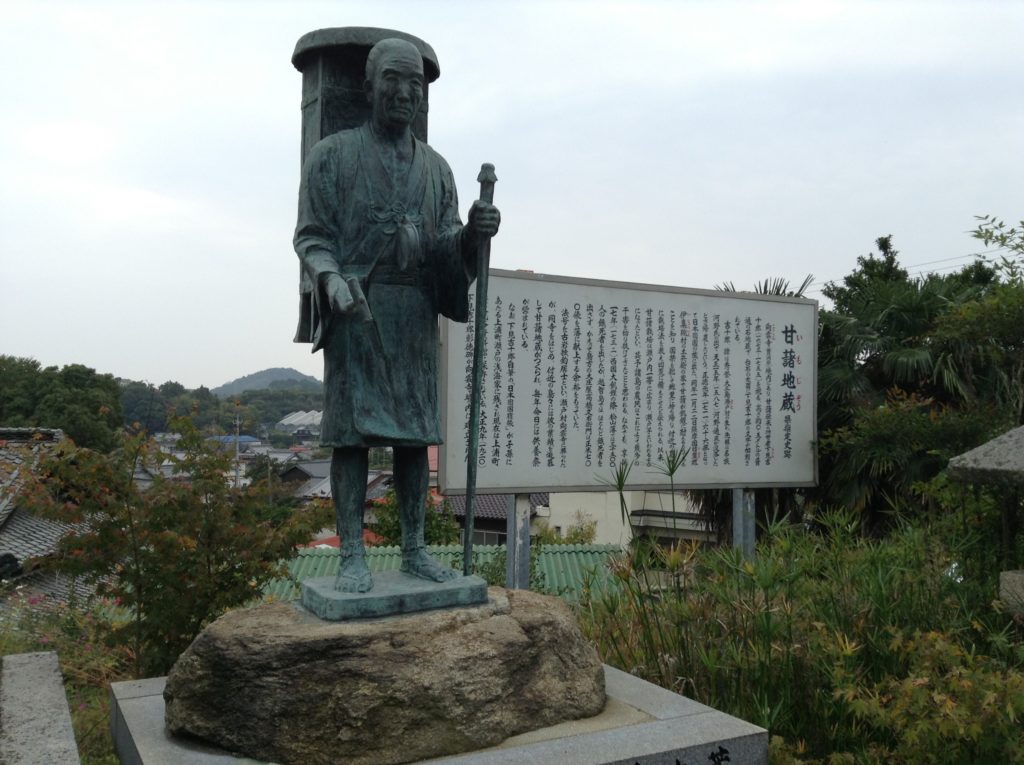
As well as Omishima and the nearby islands, the legend of Imo Jizo is also well known in Kagoshima, the sweet potato’s motherland. Nakahara-san, who had read the story of Imo Jizo as a child, lamented the fading of the tale after the book went out of print, and was determined to see a reprint someday. This genuine love for Imo Jizo together with Lucas’s attachment to old roads culminated in this journey to the land of the sweet potato. The aim of this trip was for Nakahara and Lucas to personally hand-deliver sweet potatoes originally smuggled by Kikujiro all the way back to Ijyuin, with an attitude of appreciation. To do so, the two would need to retrace Kikujiro’s presumed route in reverse. Covering over 300km in ten days, their Imo Jizo sojourn had begun.
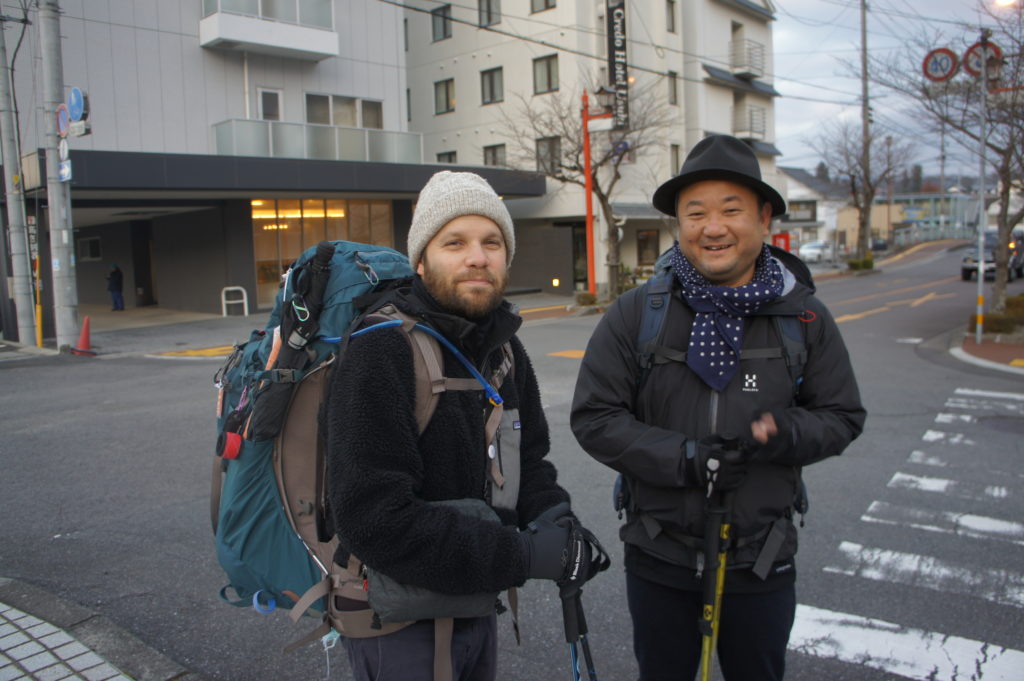
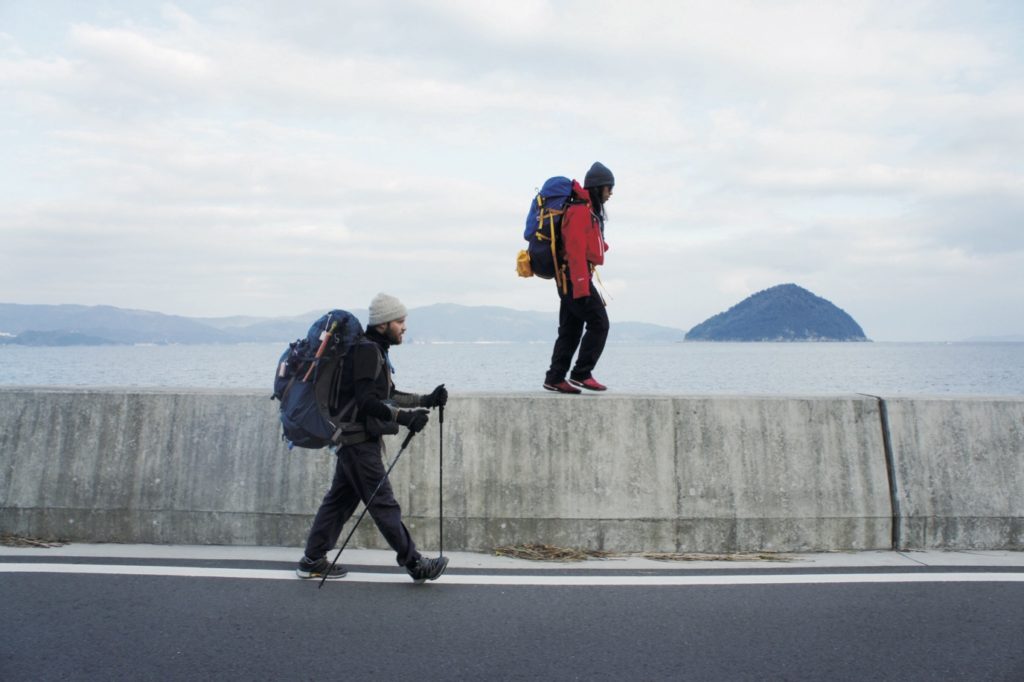
Day 1 was a ferry ride from Ehime over to Usuki City in Oita Prefecture. An area associated with brewing, Usuki has maintained the ambiance of the old townscape. The many onsen hot springs suddenly evoke a feeling of travel. It’s early days, and the hikers walk with a light step. Day 2 takes them to Naokawa, followed by Kitakawa on day 3, a single-minded trudge dead south along highway number ten. It’s an arduous 2 days, bereft of any highlights.
On day 4, they at last reach Miyazaki Prefecture, and drop in at a camphor factory in Hyuga City, one of only two in Japan. Apparently, there were once four factories thanks to the abundance of camphor trees in the area. An invigorating aroma fills the entire factory, revitalizing body and mind. Today’s goal is not far away.
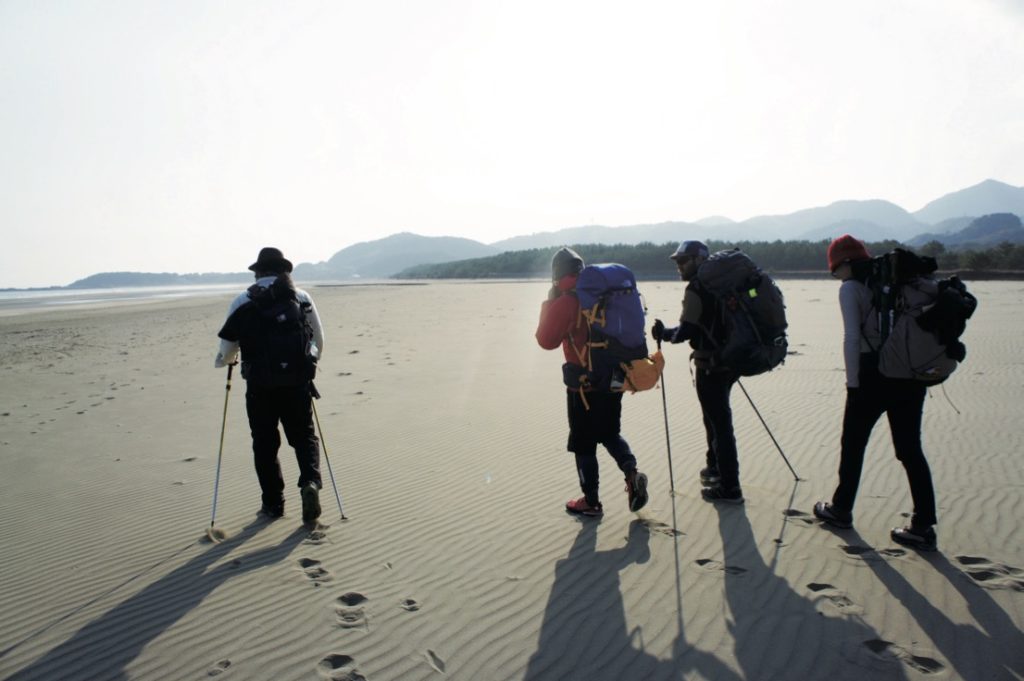
Day 5. From Minami Hyuga to the town of Takanabe. On highway ten, gruff-looking truck drivers hoot their horns and give a thumbs-up. Midway, the ramblers chill out in Mimitsumachi, which has strong undertones of Kamigata culture from the Osaka/Kyoto region. The charming town has white-walled houses with lattice doors, and according to local legend, is where Emperor Jinmu launched ships for his eastern expedition. In such a traditional townhouse, we hear about the history of the town while tucking into tsukiire mochi, a local delight once presented to Emperor Jinmu. This was a moment of sheer bliss for the ramblers, all possessed of a sweet tooth.
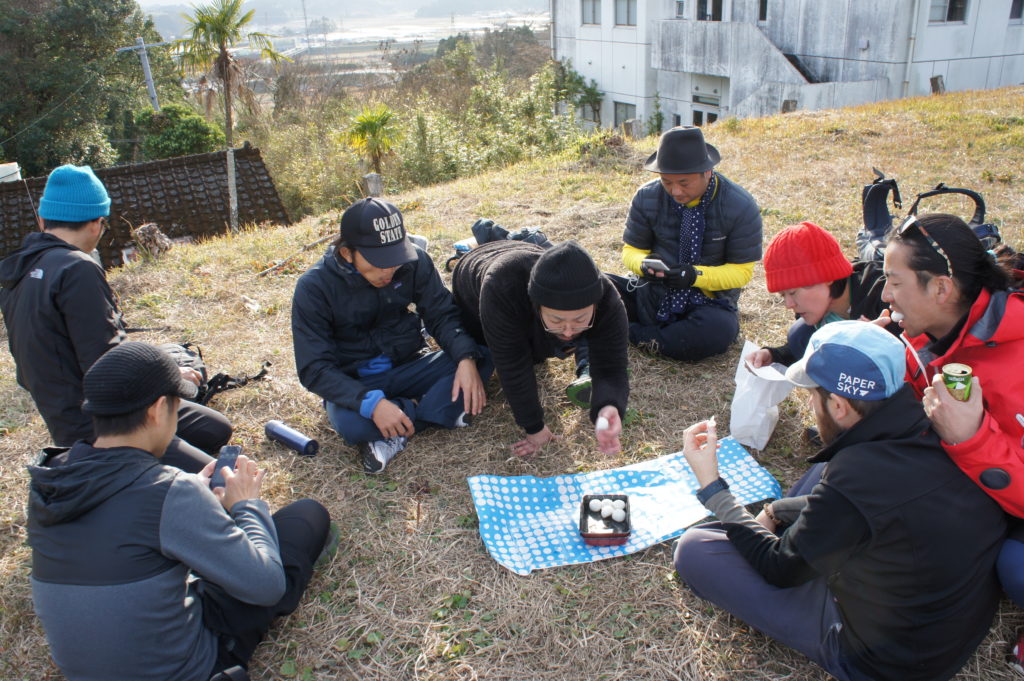
Day 6. Branching off route ten that heads down the coast, we head to the town of Aya in the mid-western part of Kyushu. Aya is committed to coexistence with natural ecological systems, and the entire town promotes organic farming as a way of life. Starting to feel fatigue creeping in, the ramblers are revitalized by an exceptional yakuzen meal, medicinal cooking based on traditional Chinese medicine. Tomorrow, at last, marks the start of the mountain stage.
The goal for day 7 is Yunomoto Onsen located at the foot of Mt.Kirishima. Motivation wells up with a view of Kirishima Shrine, one of the highlights of the trip. Day 8 takes the group from Kisrishima Higashi Shrine to Kirishima-jingu Shrine, by way of Mt.Takachiho. It is a relentless climb following the ascetic trail that Kichijuro presumably trudged along 300 years ago. It is pretty steep. The next day, heading from Kirishima Jingu into downtown Kagoshima City means reverting to good old highway 10.
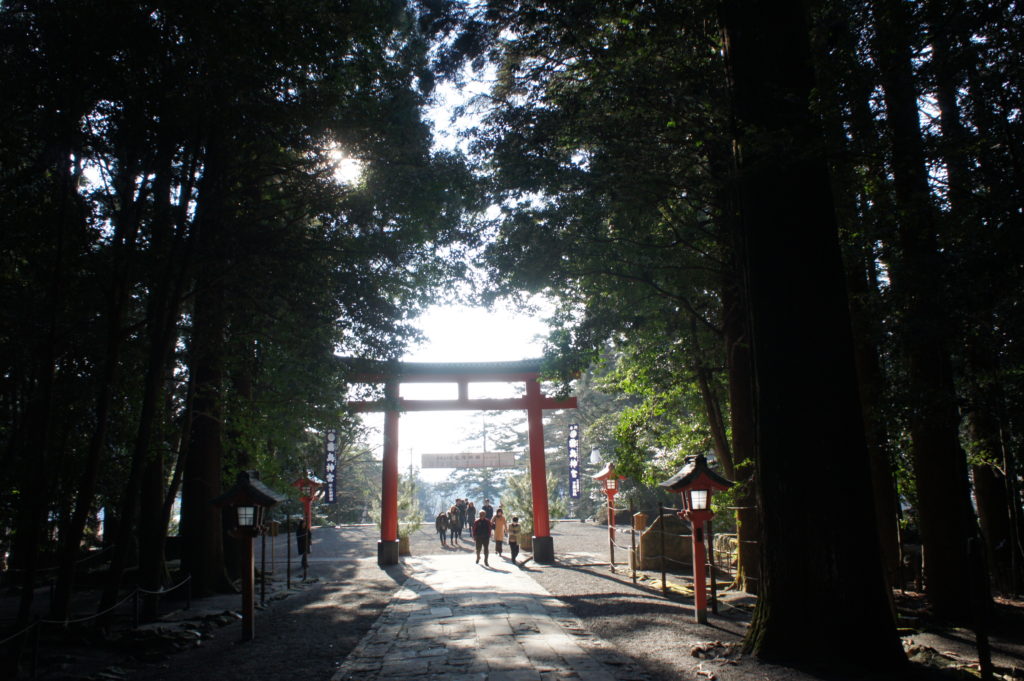
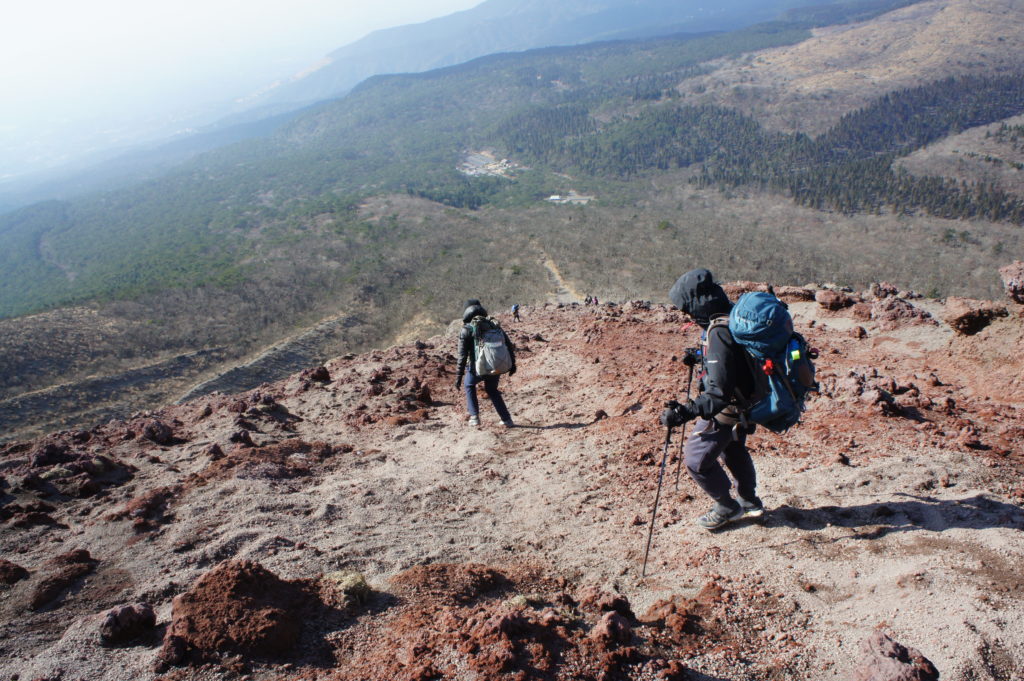
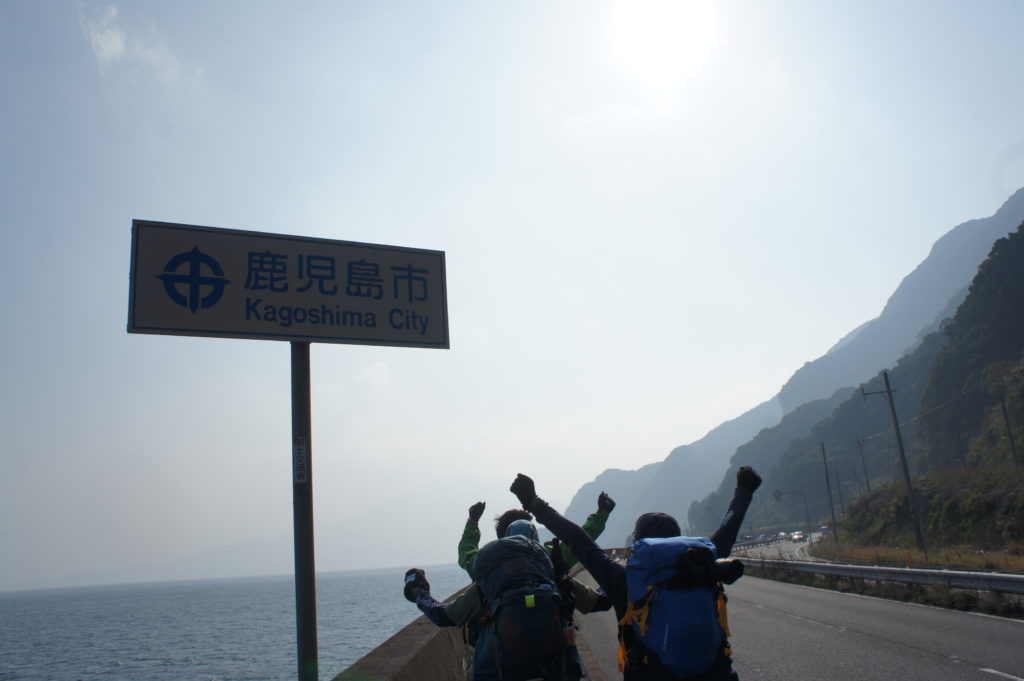
The final day. After each hiker has confirmed that the sweet potatoes are still safely stashed in their rucksacks, they depart from Terukuni Shinre in the middle of town. Upon arrival at Ijyuin station some 20km away, the group link up with local sweet potato farmers to whom they proffer the sweet potatoes. These farmers, it turns out, cultivate this seed potato and are planning to brew an Imo Jizo branded shōchū. The presentation ceremony is lifted by the trumpet playing of Shuichiro Sakaguchi, a musician who joined from day 8. And so, engulfed in these wistful tones, Lucas and Nakahara ponder the end of their journey. It’s New Year’s eve. Casting their minds back to events of the previous year, the two set off on the road home.
